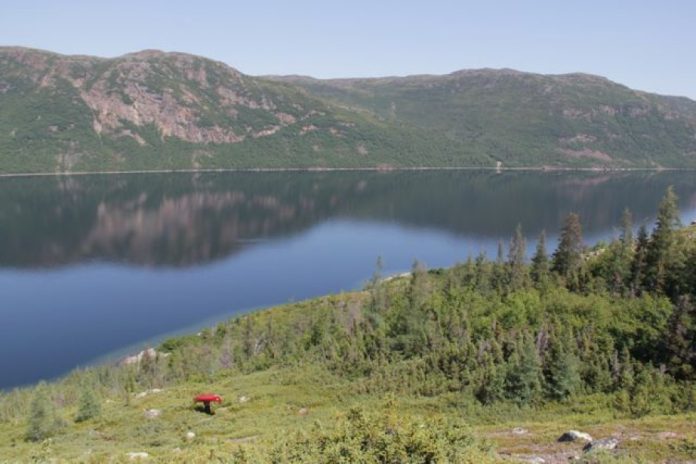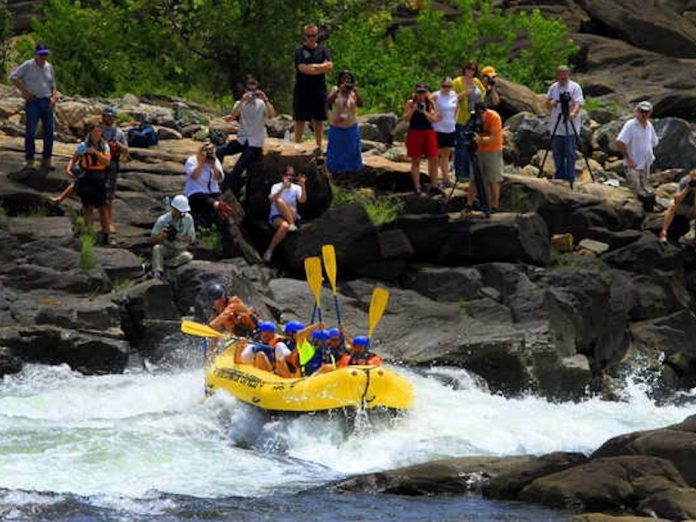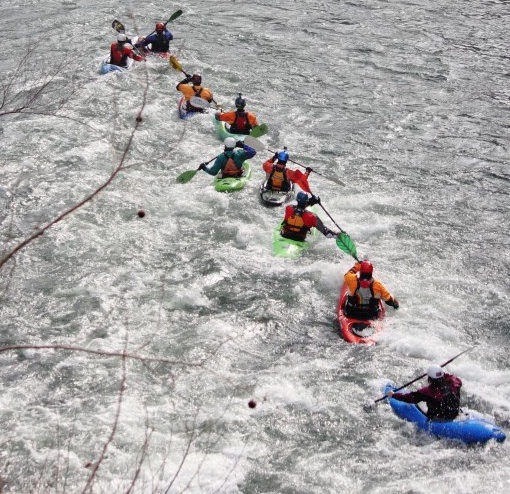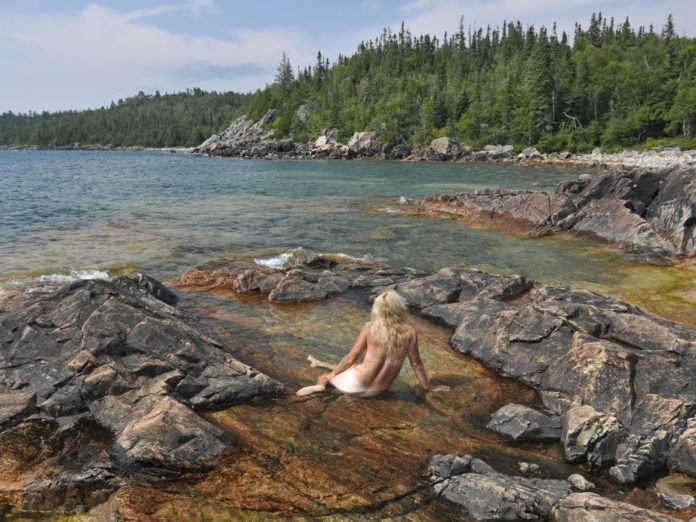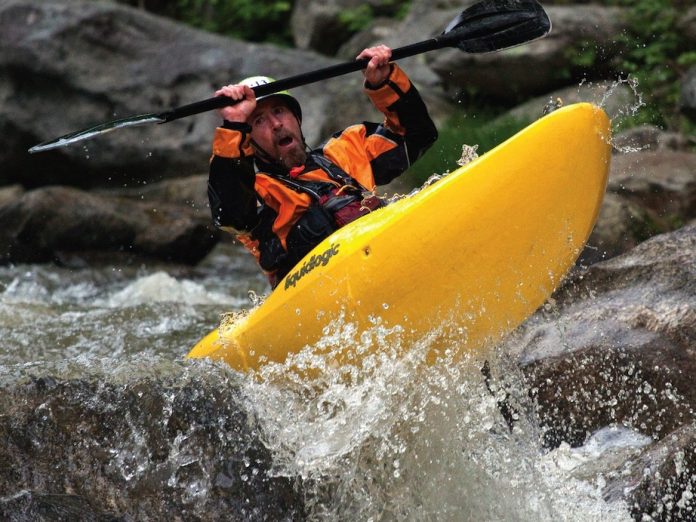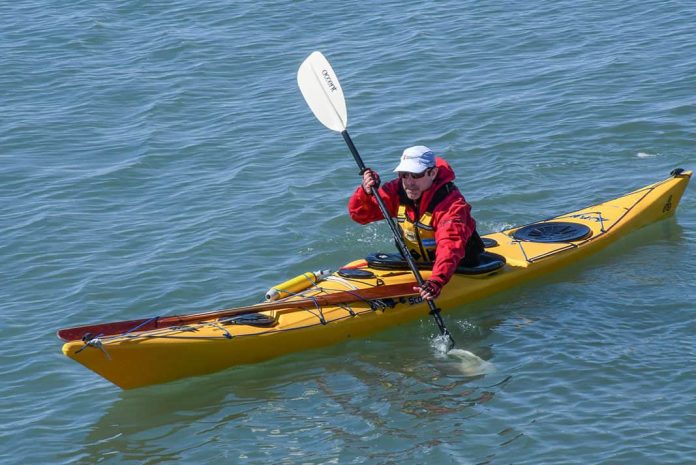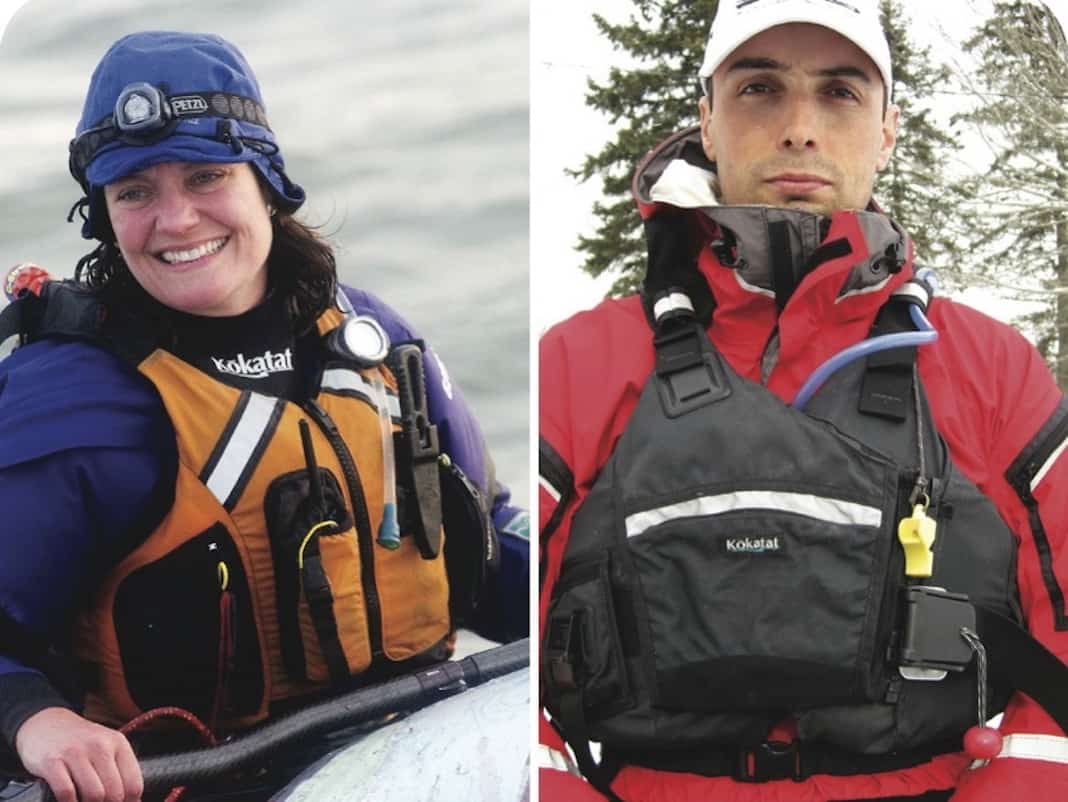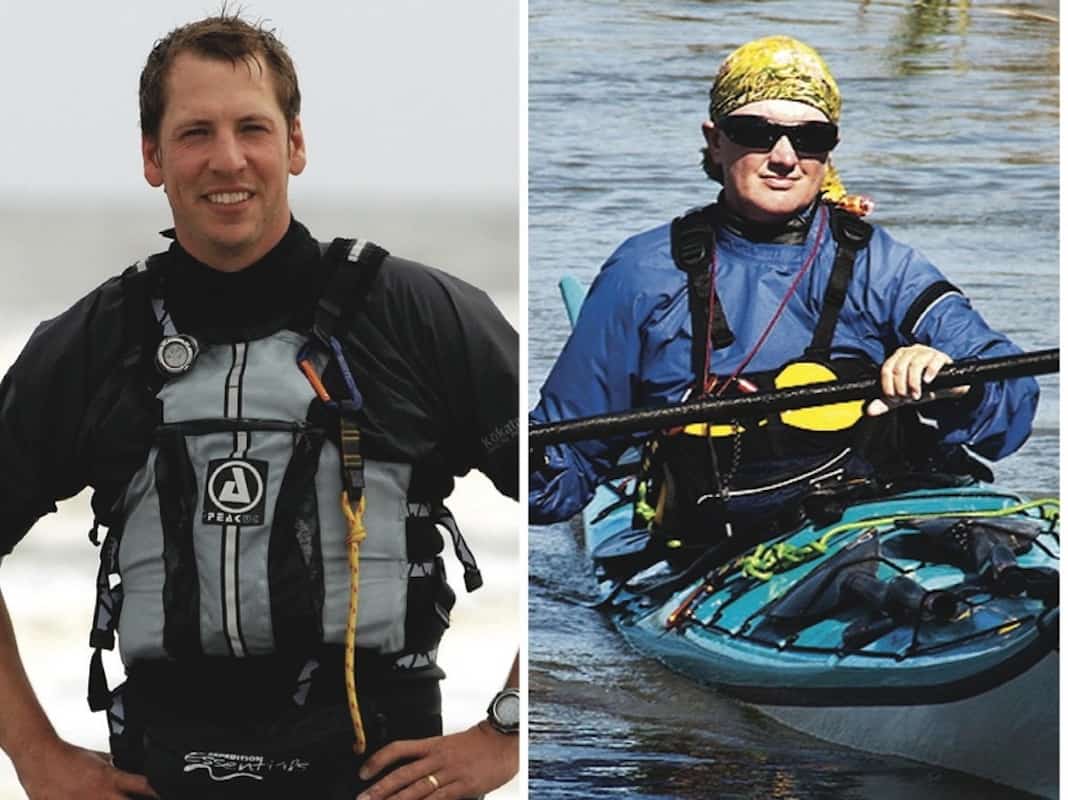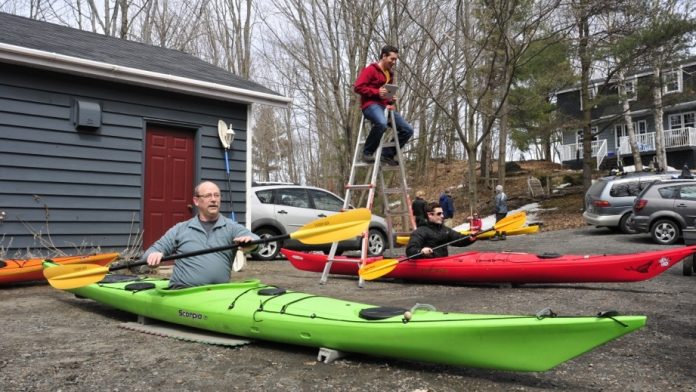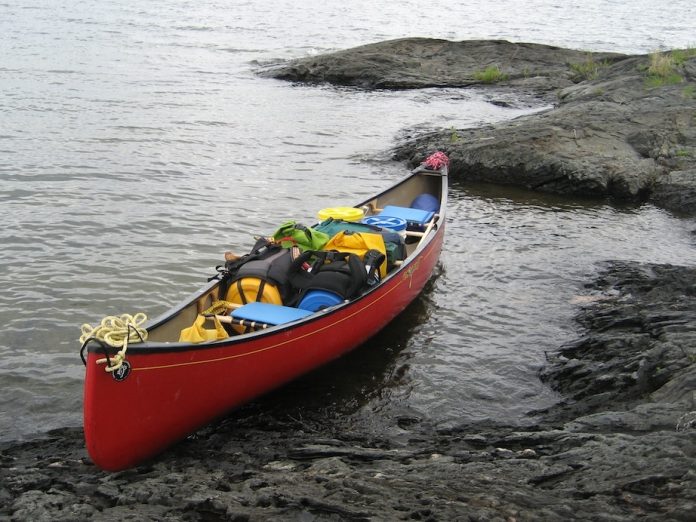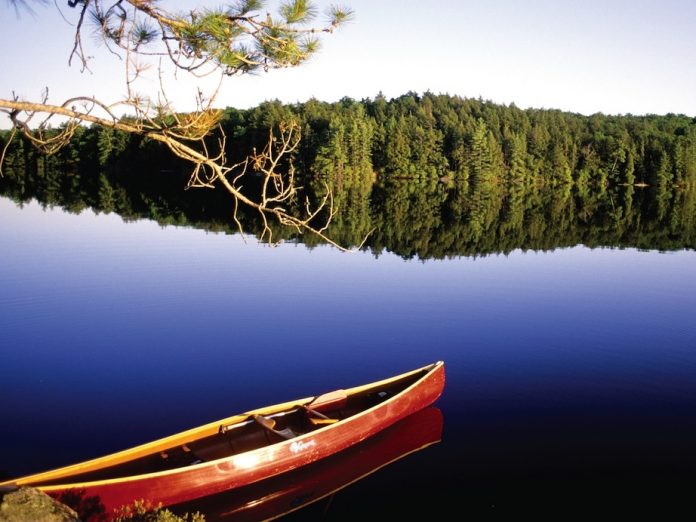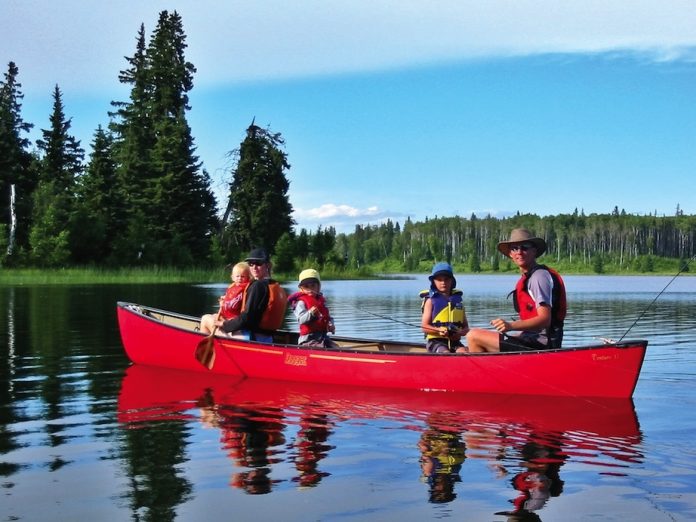‘Kitturiaq’ film trailer from Frank Wolf on Vimeo.
Across the Labrador Plateau
Weekly Whitewater News, April 11, 2013
This week in whitewater news: a California kayaker helps rescue family from a floating SUV, World Kayak announces Nashville kayak event and a new whitewater course is scheduled to open on the Chattahoochee River.
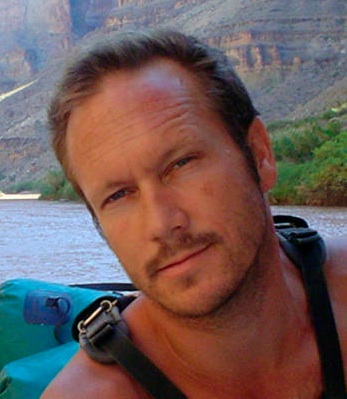
Kayaker Rescues Family from Floating SUV
The Contra Costa Times reported that kayaker Mark Divittorio helped save a California family from their SUV after it veered off the highway and plunged into the American River on Thursday. Divittorio helped bring the family’s three daughters to shore and activated emergency services who rescued Christian and Tricia Lemler from the SUV’s front seats within minutes. Divittorio credits his part of the rescue to his kayaker’s instinct after years of risk assessment and planning for the worst on the river.
Read the full story here.
(Photo courtesy of Contra Costa Times)
World Kayak Announces Nashville Kayak Event
The first ever TSRA Presents: The World Kayak Rock Island Open will take place on April 27th and May 11th. The event includes freestyle, downriver freestyle, timed race and boater cross competitions. With guaranteed water levels from the Tennessee Valley Authority the folks at World Kayak are excited for days of paddling and free prizes.
Register here for races or here for the Freestyle Cup.
(Photo courtesy of World Kayak)
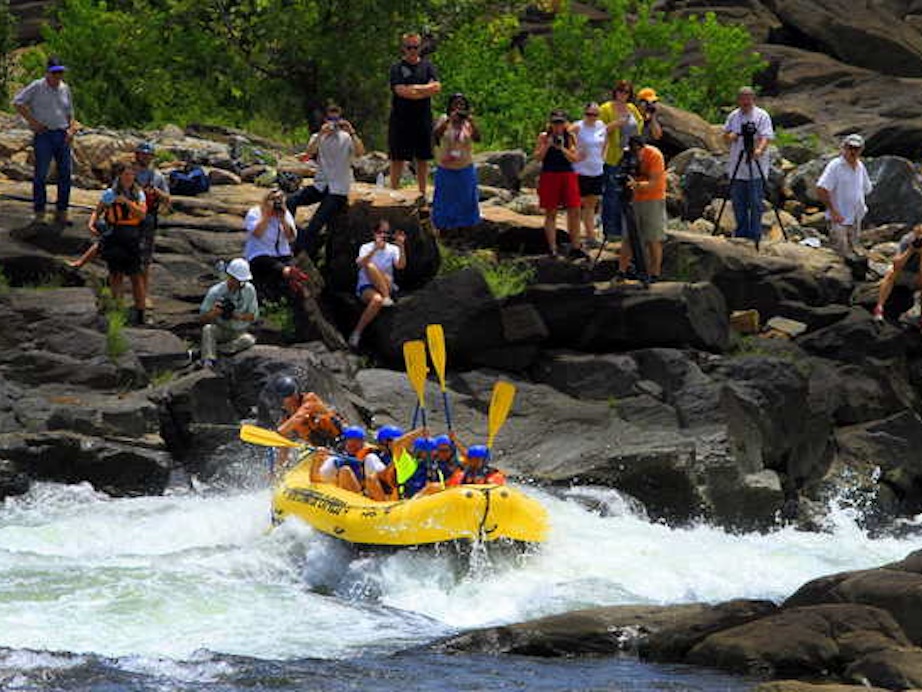
Whitewater Course Opening on Chattahoochee River
A new whitewater course that’s been in the planning and research stage for more than a decade will open this May on the Chattahoochee River. The course is part of a river restoration project that’s attracted millions in funding and is expected to draw 188,000 people down to the river for kayaking or rafting.
Read the full story here.
(Photo courtesy of Ledger-Enquirer)
Have a whitewater news story you’d like to share? Email it to [email protected].
Weekly Kayak News, April 4, 2013
World Record Skinny Dip
Nudist Organizations invite you to celebrate the tradition of skinny dipping in support of July’s Nude Recreation Week and National Take A Nakation Month. Participants have a worthy cause: a World Record Skinny-Dip across North America to beat the 2010 record set at The Guinness World Records Skinny-Dip for the largest number of people simultaneously in the water without swimsuits. The American Association for Nude Recreation (www.AANR.com) and The Naturist Society (TNS) (www.naturistsociety.com) are co-Sponsoring the record-setting event. TNS and AANR plan to coordinate skinny-dipping events at clubs, beaches, rivers, lakes, rented pools and back yards throughout North America on Saturday 13 July 2013 at 1:00 pm Local Nudist Time, as a dramatic finale to Nude Recreation Week (July 7-14, 2013).
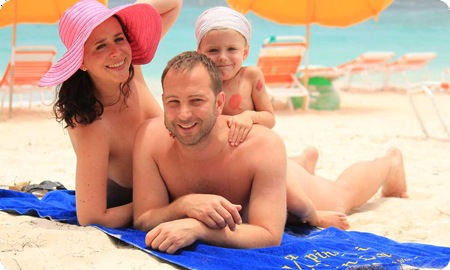
First-time skinny-dippers are encouraged to attend and “shyness can be accommodated” according to spokespersons at TNS and AANR. In case you’re curious about just how popular skinny dipping is in North America—or how two independant orgainzations could possibly exist for this cause—the AANR estimates some 52 million individuals enjoy clothing-optional recreation throughout North America. Says an AANR press release: “For over 80 years AANR has advocated to protect the freedoms, the rights and choices of all people to participate in nude recreation.” Amen.
To locate appropriate event sites and learn how to participate at the location nearest you, visit: http://www.naturistsociety.com and/or http://www.aanr.com/world-record-skinny-dip.
KayaXpedition Returns to Chesapeake
Chesapeake, Virginia, will hold the second annual KayaXpedition festival June 8-9, 2013, at waterways throughout the city. Featuring opportunities for people of all ages and skill levels to participate in paddling events. The festival will include guided kayak tours, instructional courses and demonstrations, kayak fishing and a competitive 6-mile race that will benefit Team River Runner, an organization that supports paddling activities for wounded warriors. Registration for the festival is now available online.
Big Year for Lake Michigan Water Trail
The Lake Michigan Water Trail project began in 2011 with collaboration between paddling groups in Michigan, Wisconsin, Indiana and Illinois, along with community, business and government organizations. Since then, the groups have been working to identify launch sites, camping spots and other attractions, and 75 miles of the trail is complete and open on the southern shore of the lake.
This year, coordinators are calling upon kayakers to get out and blaze new segments on the Water Trail, which will eventually circle 1,600 miles around Lake Michigan. “We’re encouraging people to pick a leg over the summer and paddle (it),” said Dave Lemberg, an associate professor with Western Michigan University and the coordinator for the 1,200-mile Michigan segment. As part of this new Trail Blazer initiative, “We want people to record and photograph the put-ins and take-out points and get shots of the in-between,” Lemberg says. “We’re looking for GPS coordinates, too. Paddlers would submit all that to a website. The first would be listed as the segment trailblazer.”
When finished, the 1,600-mile trail will become a National Water Trail. “The Lake Michigan Water Trail will be (to paddling) what the Appalachian Trail is to hiking. It will be the longest continuous-loop water trail in the world,” says Dan Plath, president of the Northwest Indiana Paddling Association, one of the founding groups in the Lake Michigan Water Trail Association. Via Michigan Live.
Photo coutesy Ken Braband.
Daily Photo: Different Strokes
A chilly April weekend brings an unusual sort of paddle strokes workshop to the Ontario woods. That’s James Roberts of Ontario Sea Kayak Centre up on the ladder, capturing footage for video analysis. On a widescreen. Indoors. With a mug of hot cocoa.
Daily Photo: I’m Ready!
“Love Canoeroots magazine…not just for the tips, blogs, articles, pics, but for the sharing of the passion for paddling!!!” writes Judy Burgschmidt. “We are sitting with 3 feet of snow in our yards, and the rivers are frozen with a foot or tow of ice….BUT we know we will be paddling soon! This pic is from the Sturgeon Weir River in Saskatchewan, one of the many historic canoe routes just a five hour drive away to put it. We were all loaded up after an awesome night and loving the black rock of the shield.”
This photo was taken by Judy Burgschmidt. Want to see your photo here? Send to [email protected] with subject line Daily Photo.
Lodge Camp Dutch Oven Review
This gear review was originally appeared in Canoeroots and Family Camping magazine.
There’s bad heavy metal and there’s good heavy metal. Bad heavy metal is Def Leppard. Good heavy metal includes AC/DC and Lodge Camp Dutch Ovens. Lodge has been doing their thing for 115 years (longer even than AC/DC). Prepare breakfasts, breads, dinners and cakes all with one pot. With a flanged lid for resting coals on top and legs to keep the oven from smothering coals underneath, these ovens are designed to spend long evenings nestled in hardwood coals. Available in 2- to 12-litre sizes, from 8 to 16 inches in diameter.
From $50 to $160 | www.lodgemfg.com
This article appeared in Canoeroots & Family Camping, Spring 2009.
Paddling in Papineau-Labelle
This article originally appeared in Canoeroots and Family Camping magazine.
Papineau-Labelle is known to some as Quebec’s Adirondacks. Though it’s not as mountainous as the ‘Dacks, the area boasts turquoise-colored lakes surrounded by prime hilltop hiking terrain. Better still, the park is less then a few hours’ drive from Montreal or Ottawa. Created in 1971 as a wildlife reserve, it protects a total of 770 lakes just begging to be looped together.
Papineau-Labelle has more than a dozen entry points. Access point Pie IX is where you get your permit and access to Lac des Sept Fréres, the main starting point for loops of two to four days with portages from 300 to 1,000 metres. Try plying Lacs Montjoie, Marceau, Primeau, Clement, Ogilvy, Mercier, Lartigue and Diamond back to Lac des Sept Fréres.
Bring your fly rod. All the park’s lakes are stocked with lake and speckled trout, and the Rivère de Sourd (one of the best spring weekend river trips in Quebec) is an angler’s paradise for spring brookies.
Need-to-know info:
Canoe Rental
Tuckamor Outfitters, www.tuckamor.ca
Topographic Maps
31 J/03 Duhamel, 31 J/04 Bouchette, 31 G/13 Low
Papineau-Labelle Information
1-800-665-6527
This article appeared in Canoeroots & Family Camping, Early Summer 2009. Download our free iPad/iPhone/iPod Touch App or Android App or read it here.
Alberta’s Best Backcountry Canoeing
This article originally appeared in Canoeroots and Family Camping magazine.
Lakeland is a wildland getaway on the edge of the boreal forest that’s home to Alberta’s best backcountry canoe circuit (rebuttals welcome). The route may come with a few quirks (such as motorized aluminum fishing boats towed by ATVs into all but McGuffin Lake), but the park’s draws include easy access, uncrowded backcountry campsites, outstanding angling and frequent flyovers by white pelicans, red-necked grebes and raptors.
Access is 55 kilometres east of Lac La Biche at the Jackson Staging Area (Mile 12 on Touchwood Lake Road). Load a nearby canoe cart and follow the portage trail for 3.2 kilometres to the dock on the north arm of Jackson Lake. From there it’s less than a one hour paddle to a large, grassy campsite on the eastern shore (if you arrive late you can stay at Touchwood Lake Campsite). In the morning, duck under the Isthmus Bridge separating Jackson and Kinnaird lakes and follow the western shore to Kinnaird Island’s campsite. Solitude-seekers can strive for McGuffin Lake by following the southeastern shore of Jackson Lake through several scenic ponds to a 600-metre portage.
No need to adopt a minimalist approach. Canoe carts are available free of charge where needed.
Need-to-know info:
Canoe Rental
Totem Outfitters in Edmonton. www.totemoutfitters.ca
Map
Online at www.gateway.cd.gov.ab.ca/pubsandmedia/lake_land_pp_map.pdf
Park Information
www.gateway.cd.gov.ab.ca/siteinformation.aspx?id=280
This article appeared in Canoeroots & Family Camping, Early Summer 2009. Download our free iPad/iPhone/iPod Touch App or Android App or read it here.



